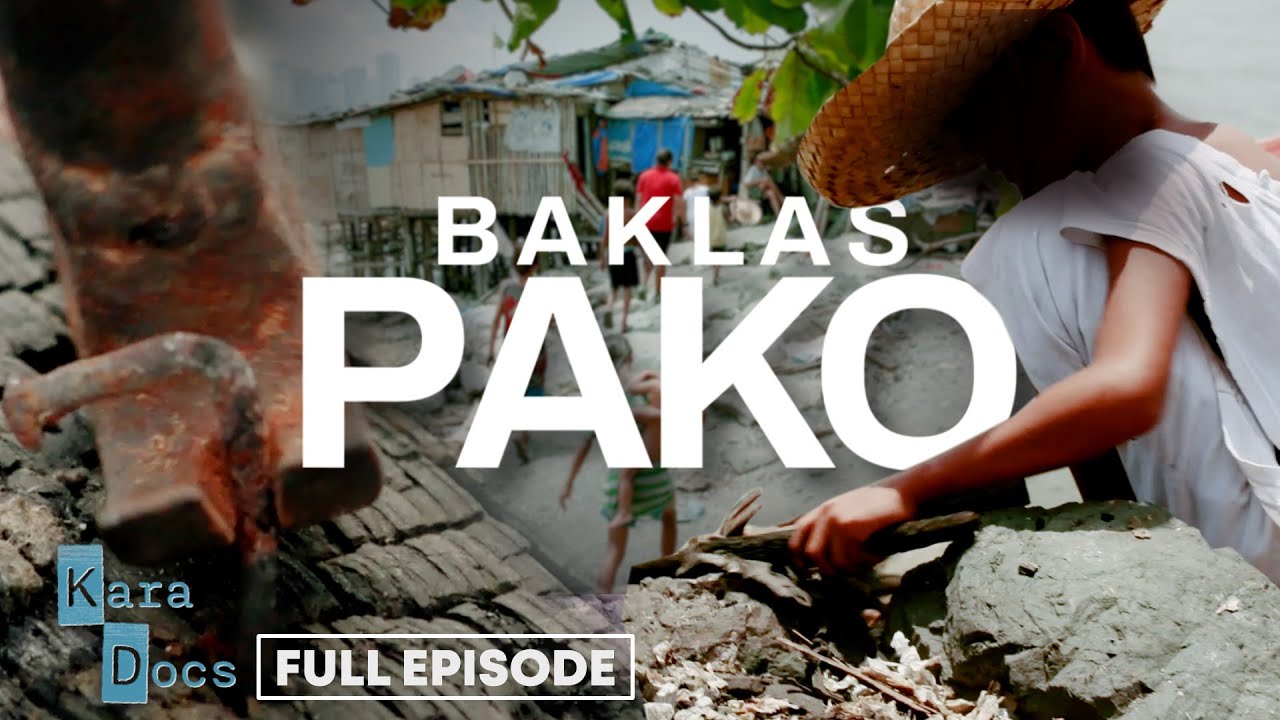'Bawat Barya,' dokumentaryo ni Atom Araullo | I-Witness
Summary
TLDRThe video script narrates the story of children like Cholo and Bitoy, who, due to poverty, are forced to work in hazardous conditions, such as scavenging in dumps and rivers. It highlights their resilience and creativity in surviving, from collecting recyclables to selling them for a meager income. Despite the risks and hardships, these children display a strong will to support their families and a desire for education, revealing the harsh reality of child labor and its impact on their future.
Takeaways
- 🏭 The script describes a hazardous environment where large cement spills are common, making it an unsafe place for people, especially children.
- 🌊 The Tullahan River, situated between Valenzuela, Navotas, and Malabon, is depicted as lifeless and polluted, yet people still rely on it for their livelihood.
- 🚣 Cholo, a young boy, uses a makeshift raft made of styrofoam and wood to navigate the river, collecting trash and recyclables for a living.
- 👶 Children as young as one year old are exposed to the harsh realities of poverty, with some beginning to work at a very early age to support their families.
- 🏡 Cholo's family lives under precarious conditions, sometimes sleeping in a jeep due to the lack of space and resources at home.
- 🍚 Bitoy, another child, is shown to be struggling with hunger and relies on occasional meals from a karinderya (small eatery).
- 🔍 The script highlights the children's resourcefulness, such as using magnets to collect metal from the riverbed to sell at a junk shop.
- 💰 Cholo has been saving money from his earnings, aiming to build a house for his family, showing a sense of responsibility beyond his years.
- 🏢 The children's situation is dire, with some having to drop out of school to work, reflecting the harsh choices faced by impoverished families.
- 👮♀️ Social workers from Navotas intervene in Bitoy's life, offering him shelter and support, indicating the role of social services in addressing child labor and poverty.
- 🌐 The script ends with a call to action, emphasizing the need for community and parental support to ensure children's well-being and education.
Q & A
What is the main hazard mentioned in the script related to the cement tips?
-The main hazard mentioned is that the cement tips are in a dump site which is dirty, bad, and dangerous, making it an unsuitable place for people, especially children.
What is the significance of the Tugayan River in the script?
-The Tugayan River, located between Valenzuela, Navotas, and Malabon, is depicted as a polluted waterway that is still a source of livelihood for many in Malabon, despite its seemingly lifeless state.
What does Cholo do to support his family?
-Cholo collects garbage and recyclables from the river, sorts them at home, and sells them to a junk shop to earn money for his family.
What is Bitoy's living situation according to the script?
-Bitoy, a 12-year-old, lives under an overpass and sometimes sleeps in a jeep because there is no space for him at home.
What is the occupation Bitoy is involved in?
-Bitoy is involved in scavenging for recyclable materials in the dumps and waterways to earn money.
What is the method Cholo uses to increase his earnings from scavenging?
-Cholo uses magnets to attract metal items from the water, which he then collects and sells.
What is the dilemma faced by Cholo regarding his education?
-Cholo had to stop attending school in the 7th grade to help support his family financially, and he expresses a desire to return to school.
What intervention is being provided to Bitoy by the social workers?
-Social workers from Navotas are providing Bitoy with food and shelter, and they are trying to ensure his safety and well-being by placing him in a shelter for minors.
What is the estimated percentage of child laborers worldwide as mentioned in the script?
-According to government data from 2021, an estimated 4.3% or 1.37 million children aged 5 to 17 are working worldwide.
What is the significance of the 'alkansya' in the script?
-The 'alkansya' is a container where Cholo saves his earnings from selling recyclables, which he plans to use for his family's needs.
What is the role of the social workers in Bitoy's life as depicted in the script?
-The social workers are trying to rescue Bitoy from the streets, provide him with immediate care, and work with officials to understand and address the situation of his family.
Outlines

Esta sección está disponible solo para usuarios con suscripción. Por favor, mejora tu plan para acceder a esta parte.
Mejorar ahoraMindmap

Esta sección está disponible solo para usuarios con suscripción. Por favor, mejora tu plan para acceder a esta parte.
Mejorar ahoraKeywords

Esta sección está disponible solo para usuarios con suscripción. Por favor, mejora tu plan para acceder a esta parte.
Mejorar ahoraHighlights

Esta sección está disponible solo para usuarios con suscripción. Por favor, mejora tu plan para acceder a esta parte.
Mejorar ahoraTranscripts

Esta sección está disponible solo para usuarios con suscripción. Por favor, mejora tu plan para acceder a esta parte.
Mejorar ahoraVer Más Videos Relacionados

‘Bawat Barya,’ dokumentaryo ni Atom Araullo (Full Episode) | I-Witness

MADE IN BANGLADESH - la storia dei bambini operai nel Fast Fashion🇧🇩

FAO Nutrition-Sensitive Interventions in the Philippines

Pako, sagot sa gutom ng mga bata sa Tondo, Manila — Baklas Pako (Full Episode) | Kara Docs

The White Lie - A Child Labour Documentary

Why Young Children Are Working From Dawn to Dusk
5.0 / 5 (0 votes)
